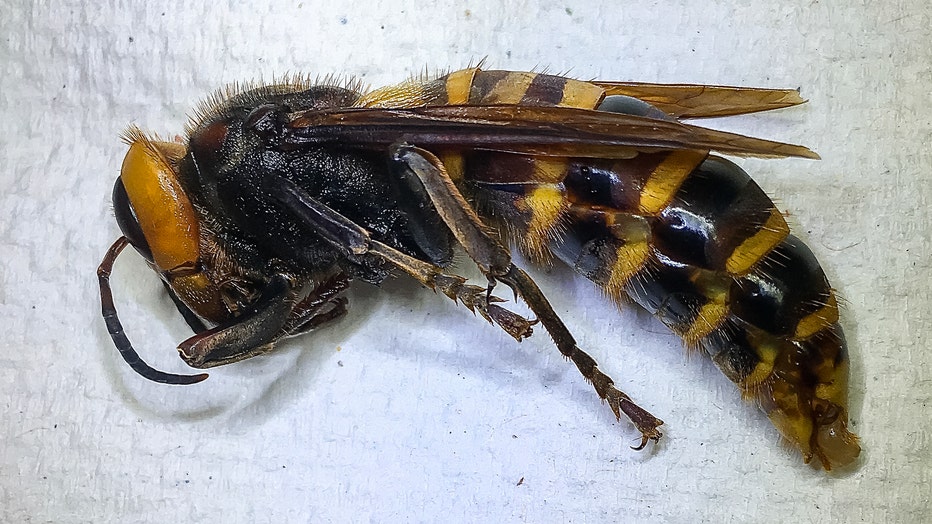Washington state traps first 'invasive' Asian giant hornet

First Asian giant hornet found in Washington state trap
Washington state agriculture workers have trapped their first Asian giant hornet.
BIRCH BAY, Wash. - The Washington State Department of Agriculture has trapped its first Asian giant hornet, the agency announced Friday.
The hornet was found in a trap set near Birch Bay in Whatcom County.
It was the first hornet found in a trap. The other five Asian giant hornet sightings in Washington state were found outside.
"This is encouraging because it means we know that the traps work," Sven Spichiger, managing entomologist for the department said. "But it also means we have work to do."
Asian giant hornet is the world’s largest hornet and a predator of honey bees and other insects. A small group of Asian giant hornets can kill an entire honey bee hive in a matter of hours.

Asian Giant Hornet photo courtesy Washington State Department of Agriculture
WSDA received the first report of Asian giant hornet last December from a resident near Blaine and later learned of another hornet in the area collected by Washington State University. These were the first-ever confirmed sightings of Asian giant hornet in the United States.
Although not typically aggressive toward humans, Asian giant hornets do pose a human health threat. Their sting is more dangerous than that of local bees and wasps and can cause severe pain, swelling, necrosis, and, in rare cases, even death.
The hornets are not known to bother people or pets, but they will attack if they feel threatened.
It is not known how they got here, but entomologists say the most likely cause if from a cargo ship between Asia and North America. WSDA is urging the public to report any sightings.
Here is a description of an Asian giant hornet from the WSDA:
- 1.5 to 2 inches long
- Large orange/yellow head with prominent eyes
- Black and yellow striped abdomen
- Forms large colonies that usually nest in the ground
WSDA’s next steps are to search for nests using infrared cameras and place additional traps to catch live Asian giant hornets.
If they catch live hornets, the department will attempt to tag and track them back to their colony so it can be eradicated.
WSDA entomologists say they hope to find and destroy the nest by mid-September before the colony would begin creating new reproducing queens and drones. Until that time, the colony will only contain the queen and worker Asian giant hornets. Destroying the nest before new queens emerge and mate will prevent the spread of this invasive pest.
The WSDA is also asking beekeepers, "citizen scientists" and residents to set up bottle traps using an experimental lure of orange juice and rice cooking wine, particularly in Whatcom, Skagit, Island, San Juan, Jefferson, and Clallum counties at the beginning of July and keep them up through October.
Commercially available hornet and wasp traps will not catch Asian giant hornets as the holes are too small for Asian giant hornets to enter the traps.
If you think you have seen one, report it here. Provide as much detail as you can about what you saw and where. Also, include a photo if you can safely obtain one, and if you come across a dead specimen keep it for potential testing.

